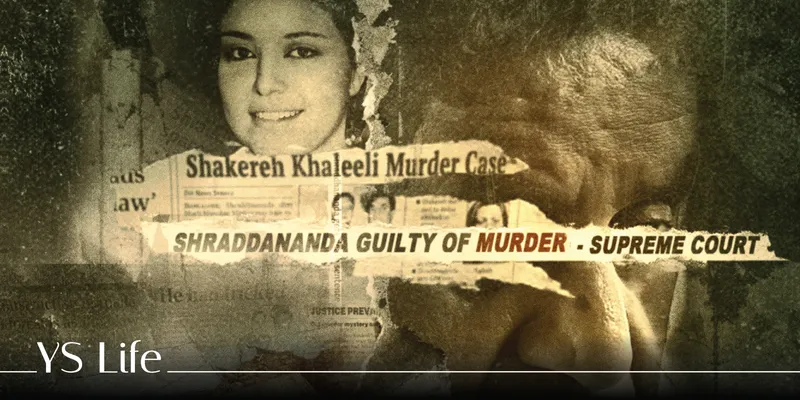Amazon Prime Video’s true-crime documentary uncovers a deadly murder mystery in Bengaluru
Dancing On The Grave is an investigative documentary to unravel the true story behind the murder of Shakereh Khaleeli, and the serial lies of her killer husband, Swami Shraddhanand.
Starring: Murli Manohar Mishra, Sabah Khaleeli, Gauhar Taj Begum, Shamstahir Khan, and others
Some crimes stay fresh in public memory. For Bengaluru, the dastardly killing of Shakereh Namazie, ex-wife of IFS officer Akbar Khaleeli, is one such memory.
Khaleeli was buried alive in a specially crafted wooden box with wheels by her second husband, Swami Shraddhanand, aka Murli Manohar Mishra. The heinous crime and years of manipulation and lies by Mishra ended in the first of its kind sentence from India’s apex court, the Supreme Court. His punishment was to die in prison.
Dancing On The Grave, the true-crime documentary on Amazon Prime Video, takes a deep-dive into the events that transpired behind this shocking crime in the heart of Bengaluru.

In May 1994, the India Today Group broke a story with the title ‘Dancing On The Grave’ on its news channel. This report joined a tizzy of media coverage across India that reported on every macabre detail of the murder of Shakereh Khaeeli nee Namazie. Killed three years earlier, Bengaluru police responded to a hysterical and justifiably angry daughter Sabah, and the crime branch finally got to the root of her gruesome murder by exhuming a skeleton and heart-breaking evidence that proved she was alive when buried.
Mother to four beautiful daughters and married to a celebrated IFS officer, Shakereh belonged to the Mysuru royal family. A gorgeous heiress and popular social figure, she gave up everything for Shraddhanand.
She married him and moved in to a sprawling property on Richmond Road, a tony neighbourhood with friends and relatives from her Shia community living all around her. As Shakereh isolated herself from her past acquaintances who boycotted her for marrying Mishra, her only contact was with her daughter, Sabah, a model in Mumbai.
When Sabah discovered that her mother would no longer call her or receive her calls, her efforts to find out what happened to her led to a web of lies and deceit from Mishra. Finally, when she could no longer deny that her mother was missing, she went to the police. After three years of investigations, a clue about Shraddhanand led to the unravelling of a stunning murder and crime.
While the sensational nature of this crime dominated headlines when the story appeared, details of what transpired and how things took such an ugly turn deserves investigation and analysis. Director Patrick Graham, along with co-writer Kanishka Singh Deo, have brought out finer elements of a free-spirited woman’s desire to be independent and to live on her own terms through four episodes of interviews, research, and conversations with family members of Shakereh.
Her decision to divorce her husband emerged from the exhaustion of raising four children while balancing the role of being a diplomat’s wife. The rebellion against pre-set rules for the daughter of landed aristocracy, coupled with human frailty, presents a poignant picture of the impressive Shakereh Namazie. Her suffering after marrying him when she faced social isolation and her mother’s disapproval through litigation strained her second marriage.
While details of Shraddhanand’s crime come across as shocking, his choices show a cunning man who seized the opportunity to make a better, wealthier life for himself. His decision to bury his wife alive and then to build a floor over her grave where he held dance parties for friends reflects a cold-blooded pathological cruelty that shows no repentance or acknowledgement of his crime.
While the cinematography and editing are basic, Graham has worked through conversations to capture nuances of Shakereh being a free-spirited Indian woman in the Eighties and Nineties through her journey. He has also given fair space for Shraddhanand to present his point of view in prison. His mercy petition is pending consideration. This case polarised everyone from top cops and top lawyers to the judiciary.
In some ways, it is a classic comment on the class divide of our country, where a man from a lower strata kills a woman of the upper crust, which brings the ire of power and authority at its most menacing form. At the same time, it is a study of a deviant’s mind that feels no empathy. Graham has artfully placed this debate at the centre of his documentary, leaving the viewer with room to introspect over these aspects of this case. References to ongoing litigation over Shakereh’s massive property in a metropolis, when contrasted with images of its crumbling landscape, underline the loss of a happy, young spirit effectively.
For those that love true crime, the crisp 30-minute episodes are worth a binge. This crime is complex, frightening, and compelling with its gory details. It makes for good rapid viewing while making one wonder about cruelty, selfishness, and the workings of a pathological criminal’s mind.
Rating: 3.5/5
Edited by Megha Reddy







